Chapter 11
Finding Employees
In This Chapter
![]() Posting a job listing
Posting a job listing
![]() Advertising your job listing to your network
Advertising your job listing to your network
![]() Reviewing applicants
Reviewing applicants
![]() Screening any potential applicants using LinkedIn
Screening any potential applicants using LinkedIn
![]() Doing a reference check on a candidate
Doing a reference check on a candidate
![]() Finding active or passive job seekers
Finding active or passive job seekers
When you have a handle on the key elements of improving your LinkedIn profile and experience, it's time to look outward toward the LinkedIn network and talk about some of the benefits you can reap from a professional network of tens of millions of people.
Whether you're an entrepreneur looking for your first employee, a growing start-up needing to add a knowledgeable staffer, or a part of a Fortune 500 company filling a recent opening, LinkedIn can provide a rich and powerful pool of potential applicants and job candidates, including the perfectly skilled person who isn't even looking for a job! When it comes to looking for an employee, one of the benefits of LinkedIn is that you aren't limited to an applicant's one- or two-page resume and cover letter. Instead, you get the full picture of the applicant's professional history, coupled with recommendations and his knowledge and/or willingness to share information. Even if you find your candidate outside LinkedIn, you can use the site to perform reference checks and get more information about him. This information can augment what you learn from the candidate during the hiring process and from the references he provides. LinkedIn cannot replace your hiring process, but it can help you along the way.
In this chapter, I cover the basics of using LinkedIn to find an employee for your company or start-up. I begin with the basics of how you can post your job listing on LinkedIn and review your applicants. I then move on to the Reference Search function, where you can use LinkedIn to screen potential candidates, and I finish the chapter with search strategies you should employ to find the right person.
Managing Your Job Listings
LinkedIn offers a Talent Solutions page for companies to manage their job listings. Hover your mouse over the Business Services link on the top navigation bar on the home page, and select Talent Solutions from the drop-down list that appears to see the Talent Solutions home page, as shown in Figure 11-1. This is where you start the process of creating a job listing, reviewing the applicants you get, and paying LinkedIn to post the listing.
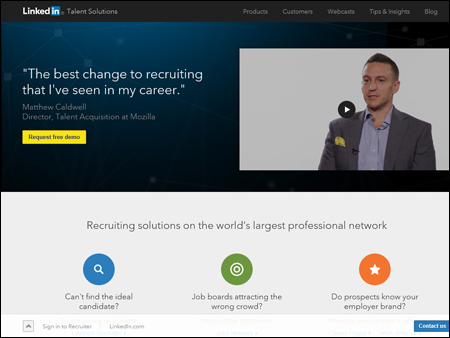
Figure 11-1: LinkedIn offers a Talent Solutions page to manage your job listings.
As of this writing, it costs $195 for one standard, 30-day job listing on LinkedIn. LinkedIn also offers packs of five or ten job credits (one job credit allows you to post one job listing) that reduce the per-listing cost by up to 35 percent or so. You can pay for your job listing with a major credit card such as Visa, MasterCard, American Express, or Discover.
You can choose to renew your listing at the end of the 30-day window. Your date posted (the date you set up the job listing) is updated with the renewal date instead of the original posting date, so the listing appears at the top of search results. The cost for renewing a job listing is the same as the initial job posting cost.
Posting a job listing
To post your job opening, follow these steps:
- Hover your mouse over the Business Services link on the top navigation bar, and select Post a Job from the drop-down list that appears.
You see the Build your Job Posting screen, as shown in Figure 11-2.
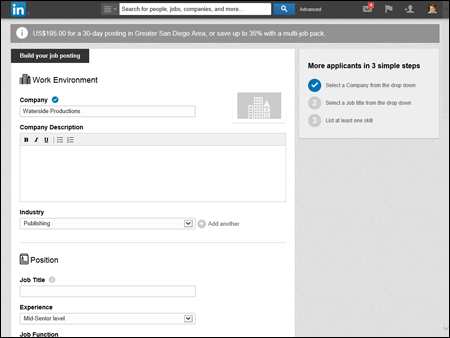
Figure 11-2: Start composing your job posting here.
- Using the text boxes and lists provided, enter the required information about your company and the job you're offering.
When it comes to your company, LinkedIn asks for your company name, a description, and the industry your company represents. As for the job posting itself, you need to specify the job title, employment type, experience level, and function. When you're done with that, you can scroll down and compose your job description and desired skills and expertise in the text boxes provided (see Figure 11-3) or copy the description from another source and paste it into the box. Just make sure any formatting (spacing, bullet points, font size, and so on) is correct after you paste the text.
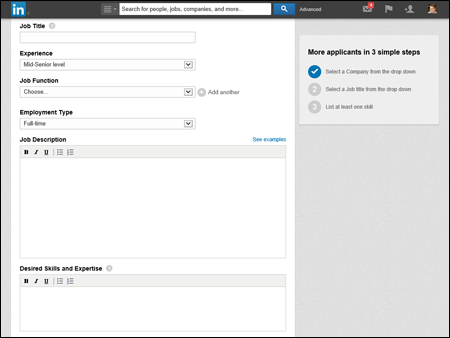
Figure 11-3: Enter the job description in the text box provided.
 If your company isn't that well known, you should include some details about the company in the Company Description field. If the job title seems a bit ambiguous, you can elaborate a bit by filling out the skills required for the job title in the Desired Skills and Expertise field. LinkedIn recommends adding at least one skill to the job posting.
If your company isn't that well known, you should include some details about the company in the Company Description field. If the job title seems a bit ambiguous, you can elaborate a bit by filling out the skills required for the job title in the Desired Skills and Expertise field. LinkedIn recommends adding at least one skill to the job posting. - Scroll down and fill in the How Candidates Apply and Job Location sections, as shown in Figure 11-4.
LinkedIn automatically offers you the ability to receive applications at one of your existing e-mail addresses, but you can decide which e-mail address should receive applications, or whether applicants should use a direct URL to apply to your job position.
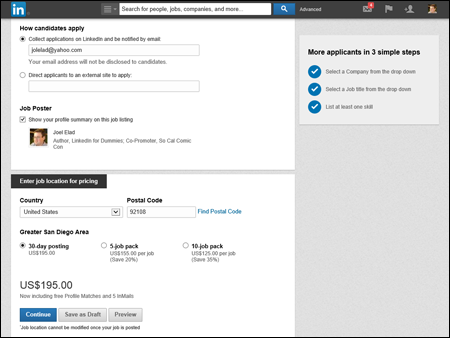
Figure 11-4: Set your information for candidate routing and job location here.
- Click the Continue button to proceed to the next step, Billing Verification, as shown in Figure 11-5.
LinkedIn analyzes your job listing and looks for matches, but first, it needs your billing information. Even if you are using a pre-paid job credit, you still need to have a credit card on file for verification purposes. Complete all the fields required and click the Review Order button. Review all the info on the next screen and then click the yellow Review Order button to post your listing.
That's it! You have completed the all-important first step: You posted your job listing, as shown in Figure 11-6. This listing is available through LinkedIn's Jobs Home page, which you can get to by clicking the Jobs link (in the top navigation bar) and doing a search in the search box provided.
After your job listing is posted, LinkedIn pops up a window over the screen (as shown in Figure 11-6), asking if you want to restrict any applicants that don't live in your home country. Simply select the box if you want to limit your applicant pool, and click the Save button when you're done. LinkedIn brings you to your job posting page, which I cover in detail in the next section.
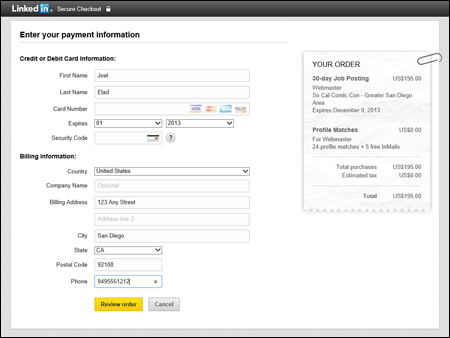
Figure 11-5: Fill out the billing information for your job listing.
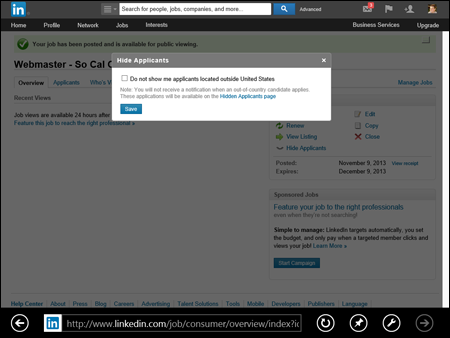
Figure 11-6: LinkedIn offers the option of limiting your applicant pool to people in your country.
Advertising your job listing to your network
Traditionally, when someone posted a job opening on the Internet using one of those ubiquitous job search sites, that person would hope the extensive pool of job seekers would find the posting and the appropriate parties would submit their resumes and cover letters. When you use LinkedIn to fill a job, however, you still benefit from the pool of job seekers who search LinkedIn's Jobs page, but you have a distinct advantage: your own network. You're connected to people who you know and trust, people who you have worked with before so you know their capabilities, and most importantly, people who know you and (hopefully) have a better idea than the average person as to what kind of person you would hire.
LinkedIn offers you the chance to “Share” your job listing using social networking sites like Facebook and Twitter, and it allows you to send all or some of the people in your network a message, letting them know about your job opening and asking them if they, or anyone they know, might be interested in this job. When you're ready to advertise your job listing, follow these steps:
- Hover your mouse over the Account & Settings button (on the top navigation bar on the right) and select Manage (next to Job Posting) from the drop-down list that appears.
After you've posted your job, you should see the position listed in the Manage Jobs window under Open Jobs. Click that job title to bring up the Job Status window for that job listing, as shown in Figure 11-7.
- Click the Share link (under the Actions for this job header) to generate a LinkedIn message.
LinkedIn automatically generates a Share box, as shown in Figure 11-8, that you can send to your network in a variety of ways. You can generate an automatic network update by selecting the LinkedIn check box. If you want to send out a Facebook update, select the Facebook check box. If you have an active Twitter following and your Twitter account is defined in your LinkedIn profile, you can send out a Twitter message by selecting the Twitter check box. If you belong to a LinkedIn group that might be right for this job, select the LinkedIn Groups check box and specify the LinkedIn group(s) to be notified. You can also select the Send to Individuals check box. Feel free to edit the text in the message box to make it sound like it's coming from you, or just leave the default message in place.
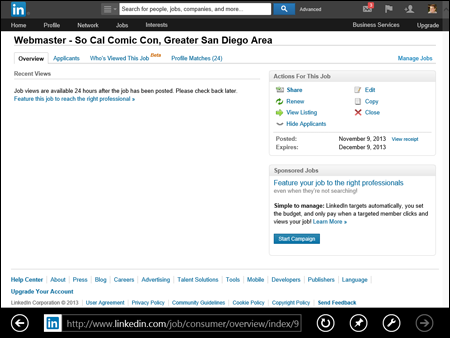
Figure 11-7: See key information about your new job listing.
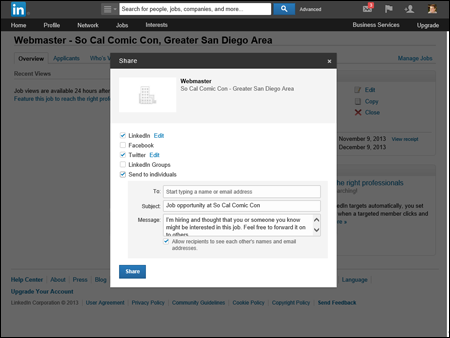
Figure 11-8: LinkedIn lets you ask your network for help.
- If you select the Send to Individuals check box to forward this job listing to your connections, start typing names in the To: box to decide who will get this message from you.
As you start typing the name of a first-degree connection, LinkedIn automatically displays its best guesses as to the correct name and headline right there below the To box. When you see the name you want, click it, and it appears in the To box. Continue to type additional names, up to a maximum of ten people.
- Look over the subject line and text in the window again, make sure you have the right people selected, and when you're ready, click the Share button as shown in Figure 11-9.
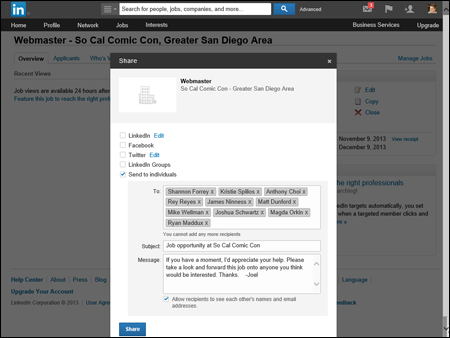
Figure 11-9: Proofread your message, and then send it!
Your LinkedIn connections will receive a message in their LinkedIn Inboxes and, depending on their notification settings, an e-mail with this message as well. They can click a link from the message to see the job listing and either apply themselves or forward it to their contacts for consideration.
Reviewing applicants
After you've posted your job listing on LinkedIn, you should expect to get some applicants for the position. Every time someone applies for that job, you receive an e-mail from LinkedIn notifying you of the application. In addition, LinkedIn records the application in the Applicants tab of the Job Status window, next to the Overview tab. (Refer to Figure 11-7.)
When you're ready to review the applicants for your job, follow these steps:
- Hover your mouse over the Account & Settings button (on the top navigation bar on the right) and then select Manage (next to Job Posting) from the drop-down list that appears.
You should be taken to the Active Jobs screen, as shown in Figure 11-10.
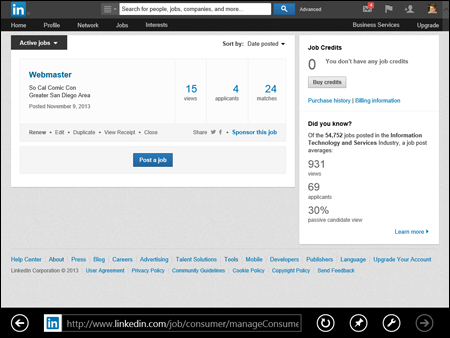
Figure 11-10: Review your open joblistings to see who has applied.
- Click the job title of the job listing you want to review, then click the Applicants tab (next to the Overview tab you're already on).
This brings up the Applicants page for the job listing, as shown in Figure 11-11. You should also see any recent applicants listed on the Overview screen for the job listing.
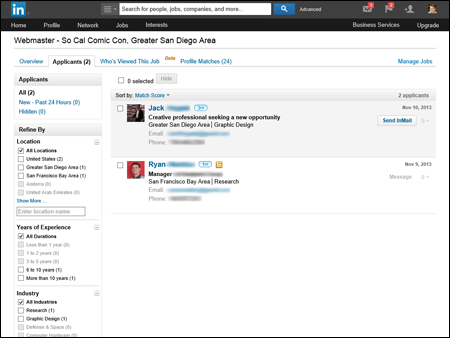
Figure 11-11: Go through each applicant's information.
- Hover your mouse over an applicant's line item (on the right hand side below the date of the application) to access the links for viewing the applicant's resume. You can also click the applicant's name to see his LinkedIn profile; click the link associated with whatever you'd like to review.
Click the Send InMail or the Message button to contact the applicant, as shown in Figure 11-12.
- Click the Profile Matches tab to see additional potential applicants for this job.
In this example, LinkedIn analyzes the job listing and then looks through LinkedIn member profiles to see what is a match for the position based on the job description and skills requirements. When I click the Profile Matches tab, I am taken to a results page, as shown in Figure 11-13. LinkedIn displays the name, headline, photo, and location of each potential applicant and a score that indicates how closely they match, based on a 10-point scale. This helps you determine whether the person in the search result has the right skills as indicated by his profile.
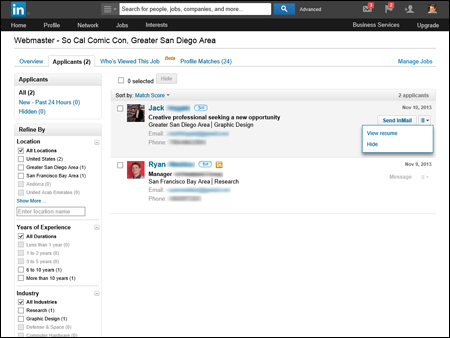
Figure 11-12: Review all your applicants’ data, such as their resume.
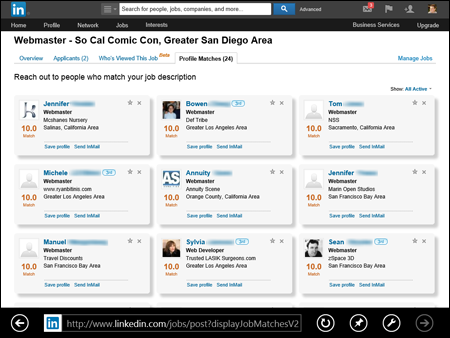
Figure 11-13: See who in the LinkedIn network might be a good fit for this position.
At this point, you could go through the search results and look for applicants you'd want to approach to see if they'd be interested in the position. There are links in each search result box to save their profile or send them an InMail message. (As of this writing, each job posting gives you five free InMail credits to contact people.) If someone is a second- or third-degree network member, that degree is shown next to their name. Scroll to the bottom of the page and click the Show More link at the bottom to see more search results.
- Click the name of an applicant and contact her to see if she'd be interested in the job.
When you click any name in the search results, you bring up the person's profile. For example, if I click Bowen C, I see his profile as shown in Figure 11-14. If you think an applicant is worth pursuing for your job opening, you can use InMail or an introduction to send him a message (I cover both in Chapter 5) and inquire about his interest in the job.
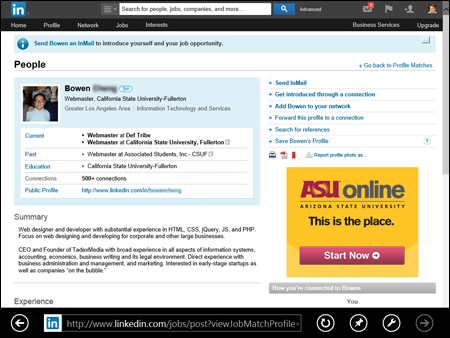
Figure 11-14: Send a message to this applicant through his profile.
Performing Reference Checks and Screening Candidates with LinkedIn
When you use LinkedIn to post a job request, the screening part of your hiring process clearly benefits. Rather than asking for references from the applicant and ordering a background check from a services company, you can use LinkedIn to verify a lot of the information in your applicant's resume and application at any stage of the process, without paying a dime!
Here are some reference search strategies to keep in mind:
- Start by checking for the applicant's LinkedIn profile. If the applicant has a common name, use additional information from her resume or application (such as past jobs, location, or education) to narrow your search. When you find her profile, compare it with her resume or application. Is she consistent in how she presents her experience?
- Read through the applicant's recommendations and follow up. If your candidate has received recommendations, go through them, pay attention to the date the recommendation was written, and see whether any are applicable toward your open position. Pay particular attention to recommendations from former bosses or co-workers. If necessary, ask your candidate whether you can contact the recommender through InMail and use that person as a reference.
- See whether you're connected to your candidate. When you pull up your candidate's profile, you see whether she is a second- or third-degree network member, which would mean there are one or two people who connect you with the candidate. If so, contact that person (or ask for an introduction to reach the correct party) and ask for more information about the candidate. Chances are good that you will get a more honest assessment from someone you know rather than the recommendations provided by the candidate. Understand, however, that while the two people may be connected, they may not know each other that well, or their connection may be outside the professional expertise you're looking to learn about from this job candidate.
- Evaluate the candidate's total picture. If your candidate mentions any Web sites, blogs, or other Web presences in her LinkedIn profile, click the links and see how they're involved. Take a look at the listed interests and group affiliations and see whether they add to (or detract from) your picture of the job candidate.
Because most LinkedIn users have already defined each company where they worked and the years of employment, LinkedIn offers an interesting and helpful application called Reference Search. It works like this: Say you're evaluating a candidate who says he worked at Microsoft from 2000 to 2005. You'd like to find out whether you know anyone in your immediate or extended network who might have worked with your candidate. LinkedIn scans everyone's profile and looks for matches in the company name and years employed and shows you possible matches. You can then follow up and hopefully get a much more honest, unbiased opinion of the candidate than someone the candidate has pre-selected to deliver a glowing recommendation. Beware, though, in case you get the ex-employee with an axe to grind.
There is one catch: You must have a paid premium account in order to use Reference Search. (I discuss the benefits of paid accounts in Chapter 1.)
Performing a reference check using Reference Search is easy; just follow these steps:
- Click the Advanced link at the top of any LinkedIn page. When the search screen comes up, click the wheel/cog near the top right, below your profile icon, and click Reference Search from the drop-down list that appears. You can also go directly to the Reference Search page by typing in www.linkedin.com/rs from your browser. (You may be asked to log in to your LinkedIn account.)
When you get to the Reference Search screen, it should bring up the window shown in Figure 11-15.
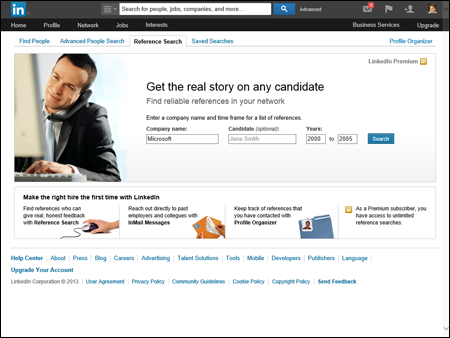
Figure 11-15: Use Reference Search to find people who may know your candidate.
- Enter the company name and years of employment in the text boxes provided.
If the candidate is currently working at the company, enter the current year in the second year box. You can enter more than one company in the boxes provided; your results list contains anyone who matches at least one of the companies provided. If you like, you can also enter the candidate's name in the box provided.
- Click the Search button to start the reference search.
You see a results screen, as shown in Figure 11-16, that summarizes the number of first-degree connections as well as the number of their friends who match your reference search.
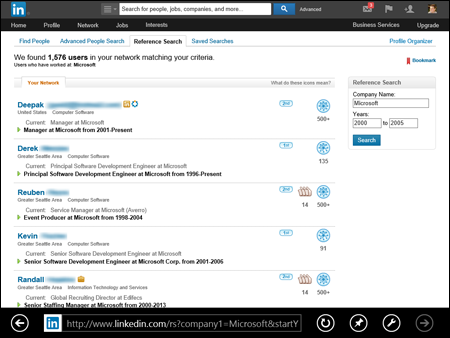
Figure 11-16: See who you know might've worked with your candidate.
- If you have a premium account — or decide to take the plunge to upgrade — you can evaluate each profile in your results list to see whether the applicant worked in the same division, and if so, contact the person in your results list for a reference.
Obviously, for a big company, such as Microsoft in my example, you may have to search multiple people to find the right division.
Using Strategies to Find Active or Passive Job Seekers
One of the powers of LinkedIn is its ability to find not just the active job seeker, but the passive job seeker or someone who doesn't even realize she wants a new job! You can tap an extensive network of professionals who have already identified their past experiences, skill sets, interests, educational backgrounds, and group affiliations. Also, through LinkedIn Answers, you can find out what they're thinking about or how knowledgeable they truly are.
The best piece of advice, in my opinion, for this type of search comes from Harvey Mackay and the book he wrote back in 1999, Dig Your Well Before You're Thirsty.
You should be building a healthy network and keeping your eye on potential candidates before you have a job opening to fill. The earlier you start, and the more consistent you are with the time you spend on a weekly or monthly basis expanding your network, the easier it is to identify and then recruit a potential candidate to fill your opening.
There are specific steps you should take to make your strategy a reality. Whether you start this process in advance or just need to fill a position as soon as possible, here are some tactics to consider:
- Perform detailed advanced searches. If you want the perfect candidate, search for that candidate. Put multiple keywords in the Advanced Search form, look for a big skill set, narrow your search to a specific industry, and maybe even limit your range to people who already live close to you. If you come up with zero results, remove the least necessary keyword and repeat the search, and keep doing that until you come up with some potential candidates.
- Focus on your industry. If you know that you're probably going to need software developers, start getting to know potential candidates on the LinkedIn site and stay in touch with them. Look for people to connect with, whether they share a group affiliation with you or respond to LinkedIn Answers, and actively network with these people. Even if they say no to a future job opportunity, chances are good that someone in their networks will be more responsive than the average connection. While Software Developer A may say no, that person probably has several software developers in his network who could respond favorably.
- Start some conversations in the LinkedIn Groups section. After you've found some LinkedIn Groups full of like-minded or interesting professionals, start exchanging information! Pose a question or start a group discussion that you would ask in an interview to potential candidates, and see who responds. Better yet, you'll see how the people respond, and you'll be able to decide from their answers who to focus on for a follow-up. You'll be able to see the public profiles of the people who provide answers and send messages to those people.

 If you know you're going to need multiple or ongoing job postings on LinkedIn, you might want to consider LinkedIn Corporate Recruiting Solutions to get discounts on multiple credits for job postings and InMail. You can get more information by completing a request at
If you know you're going to need multiple or ongoing job postings on LinkedIn, you might want to consider LinkedIn Corporate Recruiting Solutions to get discounts on multiple credits for job postings and InMail. You can get more information by completing a request at  You can advertise only one open position per job listing. If you solicit applications for more than one position within a single job listing, LinkedIn removes your listing or requires you to purchase multiple job credits.
You can advertise only one open position per job listing. If you solicit applications for more than one position within a single job listing, LinkedIn removes your listing or requires you to purchase multiple job credits.